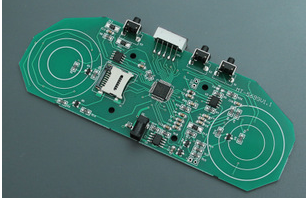SMT patch processing manufacturers can improve their processes by investing in advanced machines, increase their profitability and obtain more profits. Nowadays, the latest automated inspection solutions are easier to obtain, and AOI based on algorithm (Algorithm Based) inspection can also assist in the optimization and improvement of related processes. Next, let's explain and analyze in detail.
1. Inspection method
The inspection method of the AOI platform can be formulated by the manufacturer, and it can be algorithm-based or image-based. In the end, all AOIs are reliable images when retrieving samples, but the aspects of inspection will be different. Algorithm-based inspections will perform metrology procedures to compare component geometry values and board surfaces with configured thresholds. Image-based inspections will associate historical values collected from past inspections, including image brightness, contrast, and juxtapose the image library with the inspection images. In addition, both detection methods are currently used in the production lines of leading industry smt manufacturers. However, there is an urgent need to understand the main differences in order to make the right decision when purchasing a new AOI machine, evaluate the current inspection process or reconfigure new inspection equipment.

2. Image-based inspection
Image-based AOI collects images to create your own component library, which is suitable for good samples and defective samples. This type of method is also called correlation-based image inspection, which works by comparing components with historical databases. Image-based inspection AOI is faster and easier to program, but the initial configuration and sample identification are done by the operator, and human error is inevitable. For this inspection method to be effective, good (non-defective) boards and a large number of samples are required. This method checks by comparing the pixel-by-pixel gray-level standard deviation between the sample and the stored image. Image-based inspection AOI has a great impact on the cycle time of the production line.
3. About the algorithm
An algorithm consists of a series of processes, steps or a set of rules. After that, calculations, measurements, and pre-programmed results are performed.
4. Algorithm-based inspection
In order to understand how algorithm-based inspection software works, we must understand the component values. A smart library will come in handy because it should contain the values needed for a successful check, thus saving engineers and operators time to collect values from the data sheet of each component.
To configure proper inspections, the geometric values of each component need to be collected. To provide good solutions, suppliers can use their expertise to simplify programming time and provide smart libraries. Take PSOP as an example. For a detection configuration based on a comprehensive algorithm, the size of the PIN distribution (length, width and height) (including pin size) is required.
In addition, the intelligent board bending compensation algorithm uses the optical value to measure the height of different coordinates on the circuit board. According to the deviation of the retrieved value, the subsequent algorithm value will be compensated.
5. Detection algorithm
When configuring PCB inspection, multiple inspection areas will be selected and related values will be set. The operator must ensure that each component has a corresponding value. For each defect, the operator on the smt patch proofing or processing production line must set the inspection configuration. The operation of each inspection algorithm is different, which means that the variables it may consider are different.
6. Considerations about AOI inspection methods
1) To check any changes to the configuration, an operator with industry expertise is required. In addition, it makes manpower and training more expensive, but algorithm-based AOI requires less attention (ie: maintenance, fine-tuning, etc.). When purchasing AOI-based algorithms, priority is given to the availability of customer support and the ease of use of AOI software.
2) Based on the AOI algorithm, it is expected to increase the output rate. Then reduce corrective action requests (CAR) and other quality issues.
3) Engineering change orders and unstable PCB design will affect algorithm-based AOI machines. The inspection configuration of production should be considered in accordance with the production and launch time schedule of new products.
7. Conclusion
When choosing which automatic optical inspection solution to purchase, you first need to understand the requirements of the production line. In addition, the current production mix, PCB design stability and available manpower are evaluated according to the inspection solution. Algorithm-based AOI will indeed increase the output of the production line; however, its complex programming may limit the ROI of the machine. Intelligent component library, experienced operators and efficient customer support will help programming. The key success factor for the implementation of algorithm-based AOI for smt chip processing companies is the degree to which they can run inspection solutions independently.